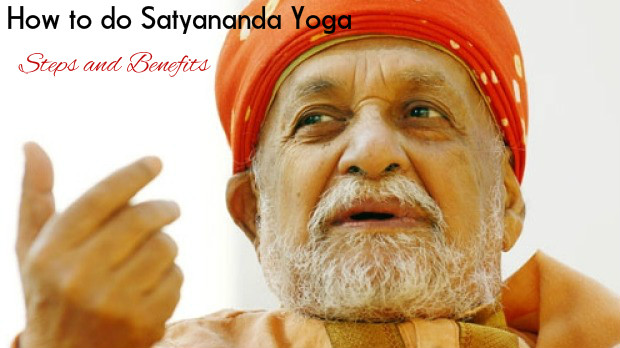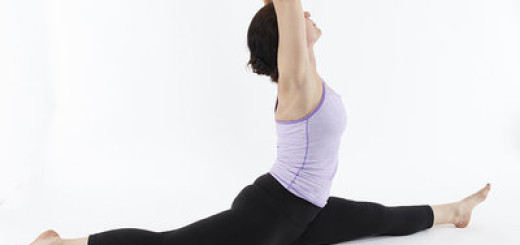How to do Satyananda Yoga: Steps and Benefits
Yoga was practiced by people in India from the ancient times. During those times doing yoga was a daily routine of the people. Yoga is easy to practice and can be practiced by all. However, the type of yoga asana done differs from one person to other depending on his/her age, health, experience and so on. Over the years, modern yoga has evolved from the ancient yogas. There are different forms of yoga and one form is Satyananda Yoga.
Satyananda yoga is an internationally recognized yoga and it was developed by the yoga master Swami Satyanand Saraswati. Satyananda Saraswati was a disciple of Sivananda Saraswati, who was the founder of the Divine Life Society .Satyananda Saraswati founded the Bihar School of Yoga in 1964. He also wrote 80 books, of which Asana Pranayama Mudra Bandha is very popular. His yoga is a collection of all the major branches of yoga like bhakti yoga, pranayam, hatha yoga, raja yoga and so on.
Most of the people want to practice yoga but are not sure which type of yoga is best suited for them. Satyananda yoga nidra is a type of yoga that every person can do. Each and every person can perform this, no matter what his age or physical health is. This is a type of meditation and it helps in making your relaxed and peaceful. Practicing it regularly also helps in getting rid of many illnesses and keeping your body in good health and condition.
You can say that Satyananda yoga is an excellent combination of ancient yoga and modern form of yoga. This yoga includes meditation, breathing exercises and asanas. To learn Yoga Nidra by Swami Satyananda Saraswati, follow the steps given below and soon you will learn to do it.
Satyananda Yoga Steps and Benefits:
Meditation:
A number of meditation techniques are included in Satyananda yoga. When you practice meditation, mudra also has an important role. This is because it is the mudra that creates positive energy and this then enters in to your body after you complete meditation.
Meditation is of great benefit for the body and the mind. By practicing meditation regularly, you can get rid of stress and become relaxed. It is also good for increasing your concentration power and you become more alert and aware of your mind and soul. You will learn the perfect way of living by practicing meditation. By attending a Satyananda yoga class, you will get good exposure to everything, from the asanas to meditation. After you complete Satyananda yoga session, remember to chant ‘OM’ 11 times, that too aloud. By chanting it loudly, a vibration is created, which fills you with positive energy throughout the day.
Pranayama:
Breathing asana is an important part of Satyananda yoga. This helps you to have a full control over your breathing. When you do yoga, you have to inhale at one moment and exhale in at another moment. If you inhale and exhale properly, only then will the yoga asana give you the desired benefits. If you can inhale and exhale in the correct way when you do yoga, then you can also do pranayama properly.
When you practice pranayama, you must also have a good knowledge about the mudras. This is because the energy that is generated when you do pranayama or practice meditation gets transferred in to your body through the mudras. So, it is essential that you have a good knowledge of mudras.
When you do mudras, you have to touch the tip of the index finger of your hand with the tip of your thumb. You can keep the other three fingers straight. This mudra is considered as the perfect mudra when you practice pranayama or chant the mantra ‘OM’.
How to do Satyananda Yoga Poses at Home:
- Keep both of your nostrils open and then inhale and exhale through both nostrils. This is a quick breathing exercise, with both nasal sides. You must inhale and exhale with maximum speed when you do this type of pranayama.
- Do the above mudra and then close your right nostril. Inhale with the left nostril and then close your left nostril immediately and exhale with the right nostril. Breathe this way by changing your nostrils.
By practicing pranayama daily, you will get peace of mind. It also helps in supplying oxygen to each and every cell of the body and makes your body and mind fresh and rejuvenated.
Asana:
One of the important parts of yoga is the asana. So you have to master the asanas if you want to practice Satyananda yoga successfully and get its benefits. Doing asanas helps in making your body flexible and also lighter. It is also good for improving your health and keeping various illnesses, body aches and other health problems at bay. Moreover, practicing asanas regularly is very beneficial for the stability of your mind. It increases your concentration power and ensures mental stability. You will feel peaceful and will be able tackle problems without undergoing any tension. Some of the forms of asanas that are included in Satyananda Yoga are Bhujangasana, Padmasana, Shalabhasana, Dhanurasana, Pashchimottanasana, Tadasana, Vajrasana, Swastikasana, marjarasana and so on. Doing asanas regularly relaxes your body and also makes your body more energetic and supple. You will notice that after you finish doing asanas, your body is renewed with fresh energy. This gives you a good feeling and the ability to face any hurdle that comes your way. You will be able to do your work more energetically and with more concentration.





No doubt yoga is a magical weapon when it comes to keeping our brain and body healthy but doing the “Proper Yoga” in the “Proper pose” is most important thing and many fail to do so as they don’t find it comfortable in the beginning and they end up twisting those poses a little without realizing the adverse affect it can have. Steps you have mentioned for the Styandara Yoga are easy to understand but would you mind adding a Youtube video of the same or screenshots. It will then more easy to follow these steps.
I am Satyananda Yoga teacher level 2, i never heard about this “pranayama”! Fast breathing is not a pranayama!!!
I quote from your article: “Keep both of your nostrils open and then inhale and exhale through both nostrils. This is a quick breathing exercise, with both nasal sides. You must inhale and exhale with maximum speed when you do this type of pranayama.”.